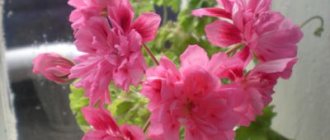An orchid is an exotic and beautiful flower. But in order to get a full-fledged blooming orchid at home, certain knowledge is required.
In order for an orchid to please the eye with the beauty of its flowers for many years, special care is required. Many novice plant growers believe that this is a lot of work, however, they are mistaken.
A flower called phalaenopsis does not require much effort or time. You just need to follow some rules.
Conditions necessary for maintaining a flower
When deciding to have an orchid in your home, it is necessary to create certain living conditions for it, namely, close to its natural content. It’s not that difficult, the most important thing is to monitor the temperature, humidity, and lighting of the room. It is also important to properly water and feed the plant, and the composition of the soil is also important.
When choosing a flower, remember that there are many types of phalaenopsis. They differ not only in appearance, but also in care requirements. Before choosing a flower, you need to familiarize yourself with the characteristics of each species.
Epiphytes are an ideal option for the home. This is a species of orchid that grows in the tropics, on trees and rocky soils. They have aerial roots that help with photosynthesis.
Creating favorable conditions for the flower
To prevent the orchid from dying a few weeks after purchase, you need to choose the right temperature and provide the necessary lighting.
It is important to create the most favorable conditions for growth for the plant.
What should be the lighting for orchids?
Light for orchids should be adjusted to their usual habitat. Direct sunlight is not advisable, as it destroys leaves and roots. Also, under such lighting, flowers die. Therefore, the south side is not the best place to keep an orchid.
The north side also does not have a favorable effect on the flower. When kept on the north side, the orchid requires additional lighting, even in the summer.
The ideal option is the western or eastern sides. This way the plant will receive optimal lighting. By choosing the right place for a flower, you will certainly extend its life.
However, proper lighting is not a complete success; there are other important conditions.
Orchids in the living room and hall
Exotic orchid - beautiful and delicate. It is a symbol of rebirth and family cohesion. The flower inspires creative individuals and enhances the desire to achieve goals. In a living room decorated in any oriental style, as well as Japanese or Chinese, an orchid will emphasize sophistication and sophistication, attention to detail and decorative elements. A plant placed on a coffee table in the middle of the room automatically becomes the center of the composition; it is impossible to take your eyes off it.
The space near orchids should not be crowded. All details fade into the background. Even white flowers will not get lost in the monochrome interior of the room if there are no other plants or decorations nearby.
In a large living room you can create a specific area with flowers. They can be different - high and low, bushy or solitary. It’s good if it is possible to use stands, racks, and select appropriate gratings for the vines. To them you can add a few more “modest”, inconspicuous plants that will fade into the background or serve as a background. You can see in the photo how to decorate a wall with orchids. Wallpaper, as a rule, should be pastel shades to further demonstrate the beauty of lilac, violet and lilac flowers framed by green leaves. A white flowerpot next to an inconspicuous wall lamp looks original.
High humidity
For orchids, high humidity in the room in which they are located is very important. 60-70% is the optimal humidity level for this plant.
In summer, air humidity is maintained much better than in winter. This occurs due to operating heating devices that dry the air space.
Nowadays, it is not so difficult to provide the necessary conditions for air humidity; it is enough to purchase a humidifier or an indoor fountain. If they are not available, you can use a spray bottle to irrigate the leaves. The most important thing is that the water does not get on the flowers and is at room temperature.
Wet leaves and roots must be protected from cold air and drafts. Orchids are just as susceptible to disease as children, so you need to make sure there are no drafts in the room.
Rules for watering home orchids
Watering orchids also has its own characteristics. It is performed differently at different times of the year. In hot weather, the plant needs watering more often, 2-3 times a week. Due to the fact that orchids are planted in transparent pots with slits, you should not simply water the plant from above.
The pot must be placed in a container with water at room temperature and held for 3-4 minutes. During this time, the soil substrate will be saturated with moisture, and the excess will drain off.
Under no circumstances should the plant be flooded, otherwise disease will inevitably occur. If watering is carried out according to schedule, but the roots of the plant turn yellow, it is necessary to carry out sanitation.
- Risks of an individual entrepreneur
- Orchid seeds: tips for choosing and rules for growing a flower from seeds. Tips for sowing and growing (120 photos + video)
Miltonia orchid: how to plant, care and grow a flower with your own hands. 125 photos of a special type of orchid
During the cold season, watering is greatly reduced, to about once a week. The plant will tell you on its own about the need for watering; its roots turn pale and the soil becomes dry.
Orchid replanting and pruning
If the old pot has become small or damaged, living roots are intertwined with dead ones, the substrate has become salty or formations have appeared on its surface, then it is necessary to replant the plant.
To do this, you need to carefully remove the orchid from the pot. To avoid damaging the root, it is advisable to cut the container. The roots are cleaned, old and damaged elements are removed with scissors. The root system must be washed with clean water. Then a new composition is poured into the bottom of the new pot.
When the plant is placed in a container, new soil should be poured into the spaces between the roots. The top should not be covered. Then the soil is moistened and placed in the shade for several days.
Pruning of the peduncle should be done at the base or where there were previously flowers. The presence of dormant buds allows you to count on the appearance of lateral peduncles or children.
Remember, if cracks appear in the center of the leaves, this is evidence of sudden temperature changes or damage. Flabby leaves indicate problems with the root system or incorrect temperature, and growths and black spots are sunburn.
When the leaves rot and a silvery cobweb appears on the back side, the problem may be pests. Therefore, it is necessary to use acaricides.
Following the conditions for caring for orchids will allow you to create a blooming garden at home. These plants will delight you with their bright flowers for a long time.
Proper feeding of the plant
It is necessary to fertilize the soil for orchids in the same way as for other indoor plants. However, there are also some peculiarities at this stage.
Feeding the plant is done using liquid fertilizers 2 times a month. It is alternated with washing the root system and substrate with clean warm water. It is necessary to fertilize the roots of the orchid only during the period of active growth and flowering.
Care and planting at home
Keeping an orchid at home is quite simple. The main thing in this matter is to maintain humidity and lighting in the room where this crop will be located. Transparent pots are used for this. The substrate should contain a large amount of tree or shrub bark.
You can reduce evaporation by using moss. To do this, the surface of the aerial roots is covered with a dry extract, which retains precious moisture. In addition, moss acts as a thermostat.
How to replant an orchid? A layer of expanded clay or large pieces of foam are placed on the bottom of the container. They will prevent moisture retention during watering. Next, the root ball of the plant is placed.
When transplanting an orchid, it is important to be especially careful. Aerial roots are not able to withstand mechanical stress. After this, the pot is gradually filled with dry bark. The voids are filled with smaller pieces or dry moss.
When the plant is transplanted, it must be watered with warm water and complex fertilizer. To do this, place a pot with a flower in a deep container filled with water and leave until the roots are completely saturated.
When they have acquired a dark green color, it is removed from the water and left to drain off excess liquid.
How to care for an orchid? Care includes spraying the roots and leaves with warm water. Experts recommend maintaining a constant temperature of 25-27 C.
If residues of dust and dirt are observed on the surface of the leaves, they are removed with a damp cloth. The photo of orchids shows the best varieties of tropical crops that will not leave anyone indifferent.











